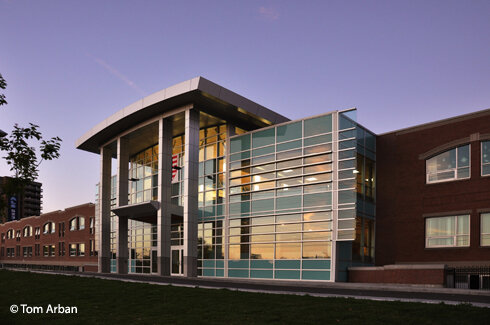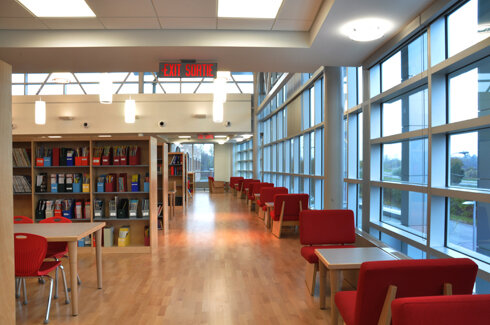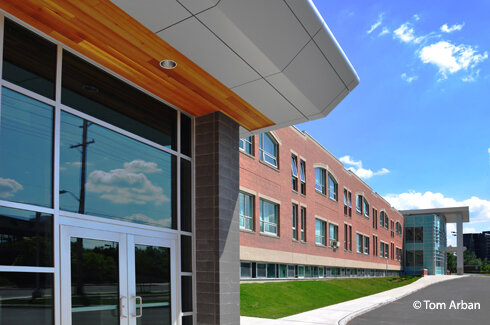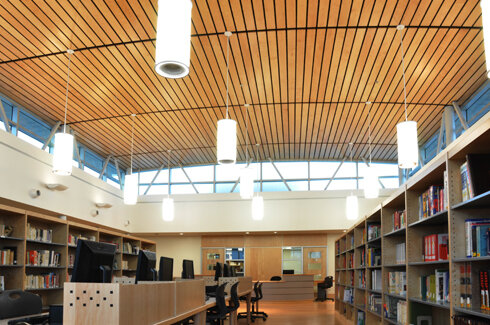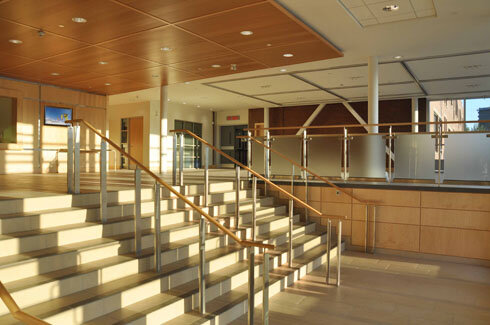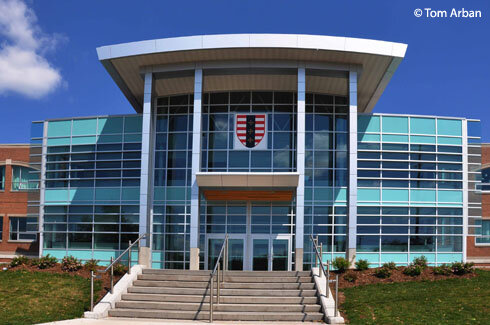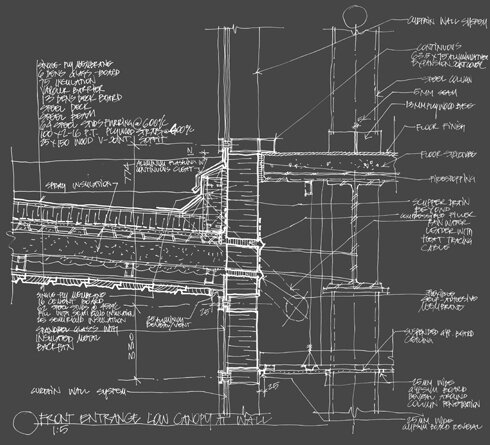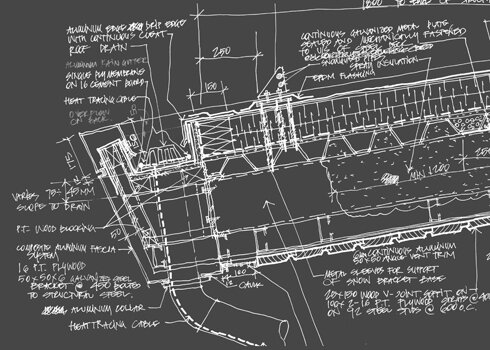Lycée Claudel, Addition and Alteration - Phases I and II
Ottawa, Ontario
Lycée Claudel
The Lycée Claudel d'Ottawa, named after the French Catholic poet Paul Claudel, is a French private school that follows the French International Curriculum. Located in Canada’s national capital, the school is privileged to count children of Canadian politicians and international diplomats among its students.
Built in the early 1960s, the original school campus lacked a front façade, centralized administration, a distinctive architectural image, a streetscape, and easy accessibility within the multi-building campus.
The Phase 1 addition, an infill between two existing school buildings, provides a new distinctive and iconic front for the school campus. The new elevated drop-off traffic lane and monumental stairs create a meaningful foreground for new dramatic architectural form and provide a backdrop for the memorable class photos and community gatherings. This phase delivers a strong new public and visible urban connection to the street and Transitway station.
The transparent and reflective quality of the exterior façade creates a friendly relationship between building form and the street. It is a simple and refined building, complementing its setting in terms of materials, massing, linkage, and orientation. Furthermore, the distinct linearity created by the extensive use of glass panes and window mullions break the solidity of the two older brick structures, creating a light sense of movement and contributing to a feeling of transparency.
The Phase 2 addition, comprising of classrooms and a 600-seat auditorium, forms a new powerful urban node adjacent to a multi-storey apartment complex. The auditorium features a distinct separate entrance for after-hours events and programs.
Both additions are sophisticatedly planned attempts to aggrandize a modest-sized educational facility, which would be otherwise lost amidst its urban high-density apartment complexes. As an urban strategy, the buildings, the landscape and the streetscape contribute to the “rehabilitation” and “humanization” of the previously underdeveloped urban strip located between a railroad, the Transitway, and a major road.



